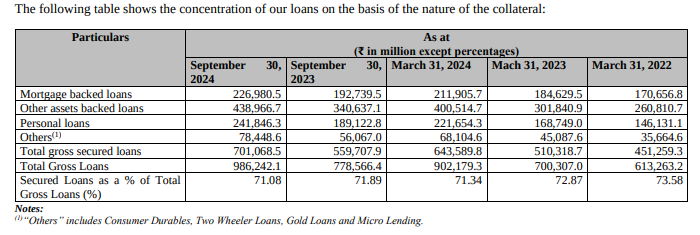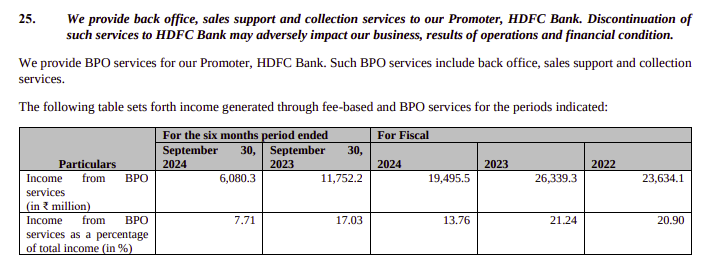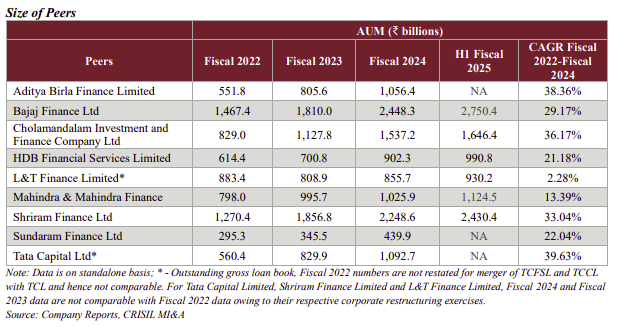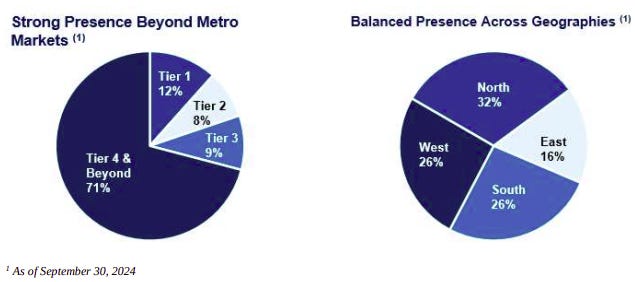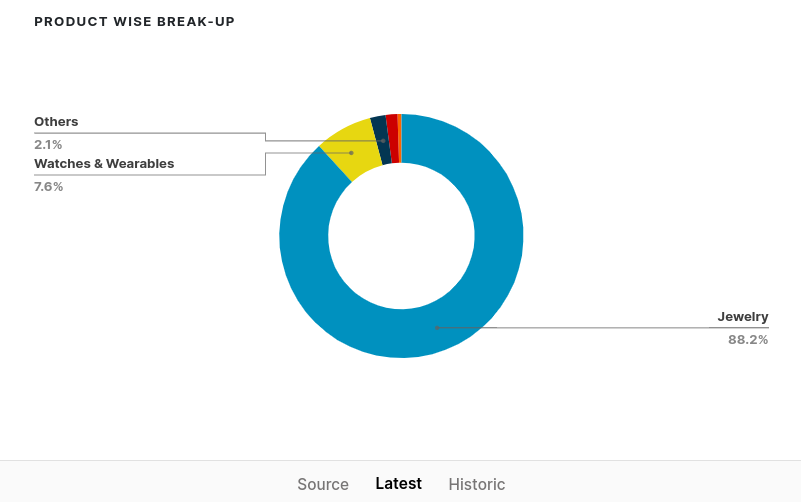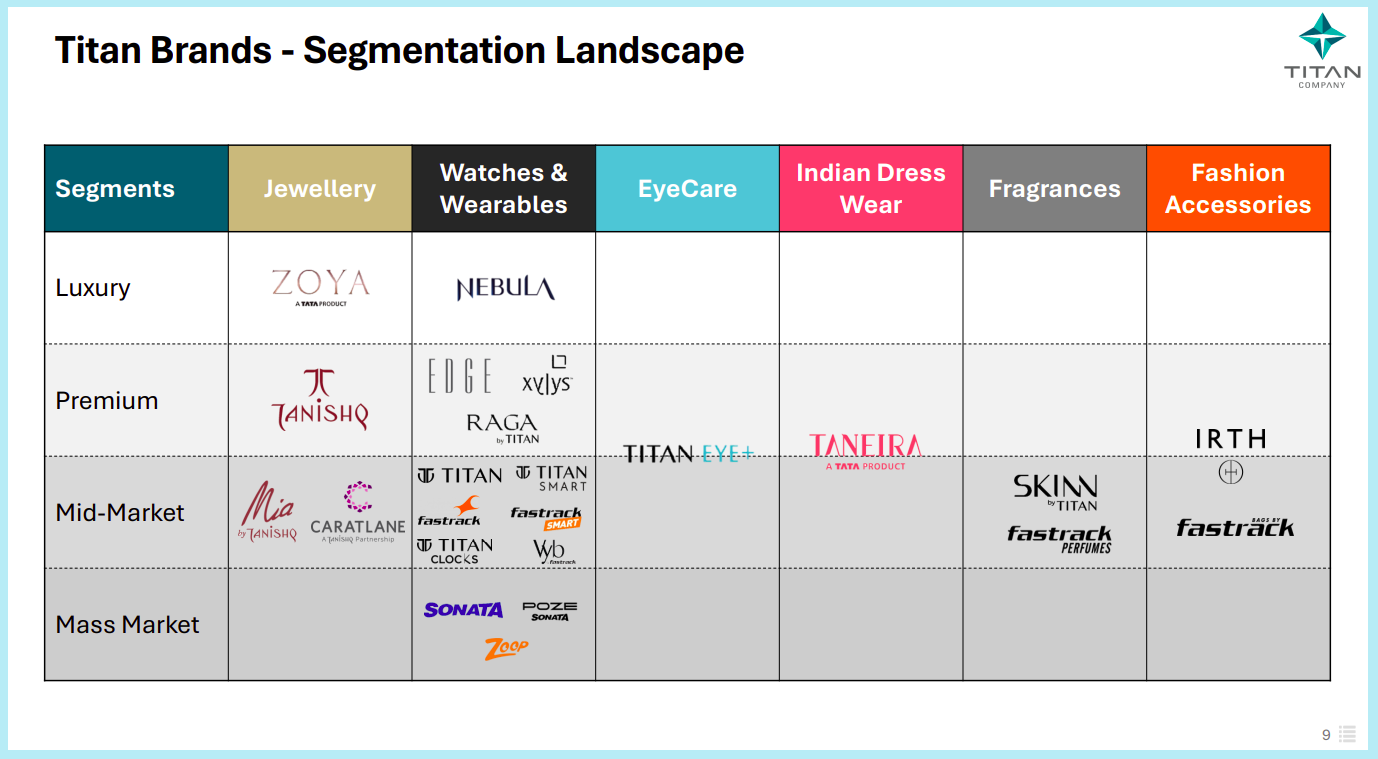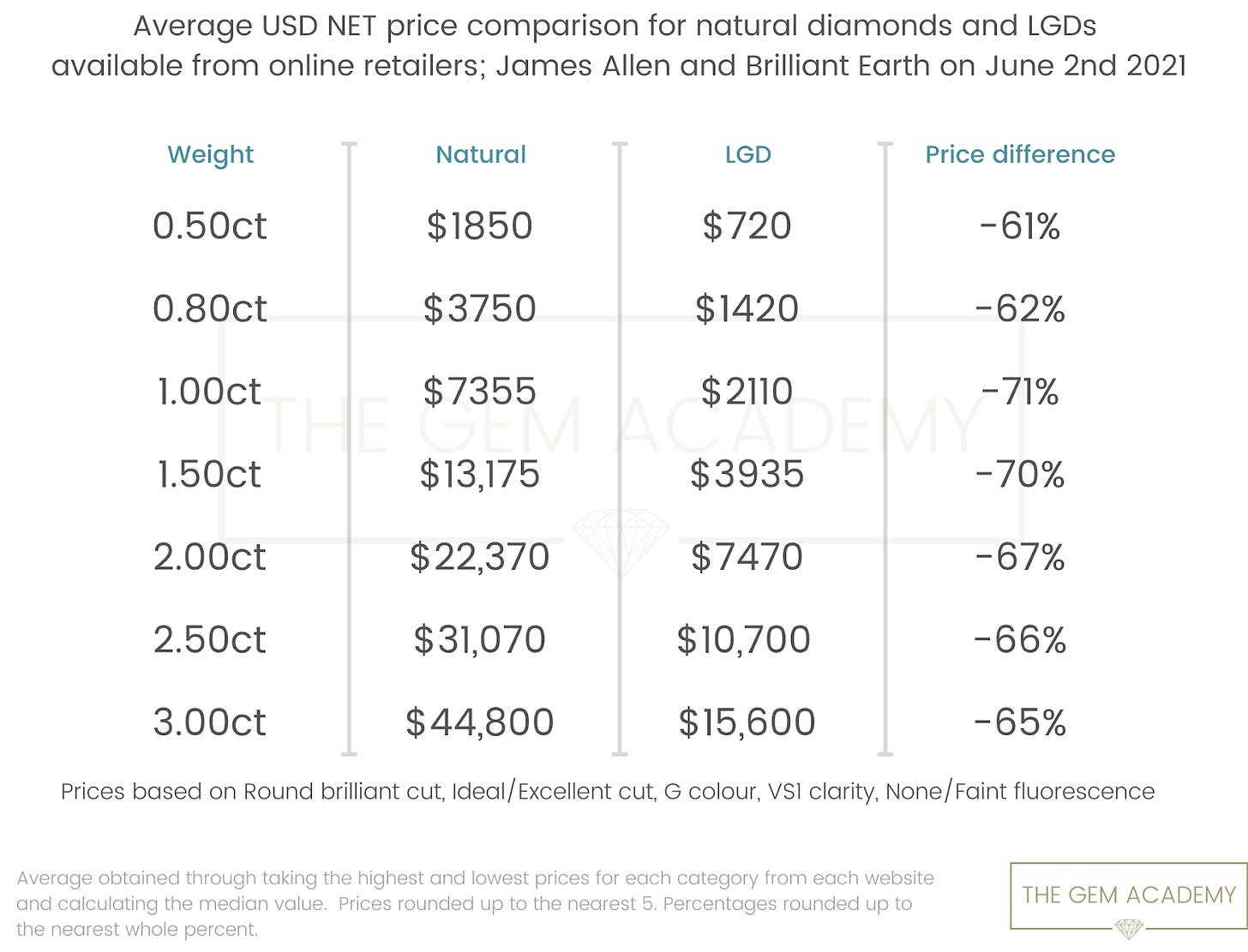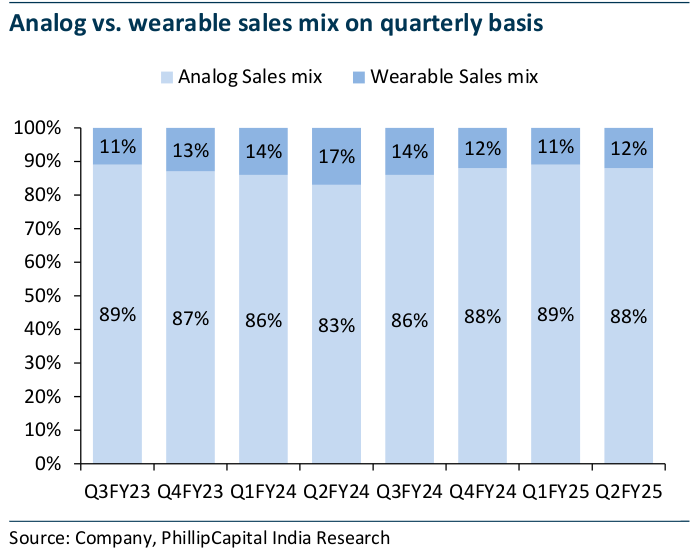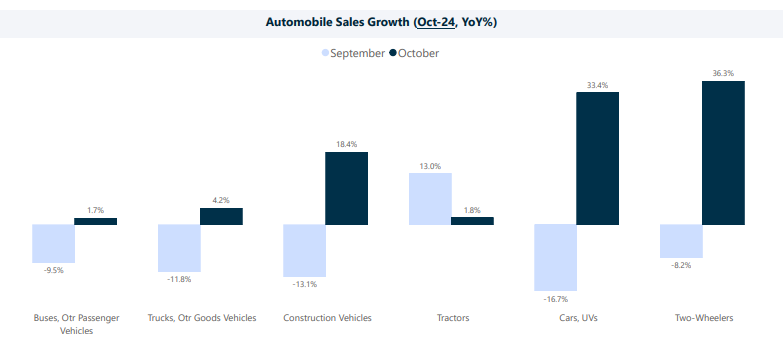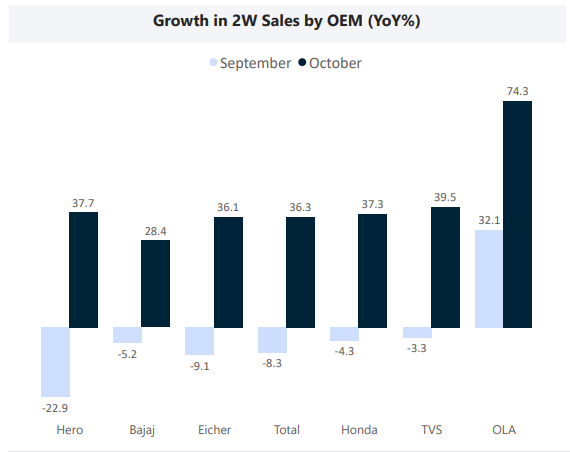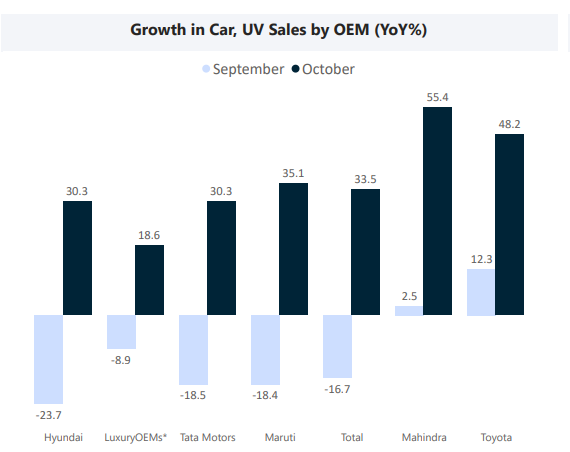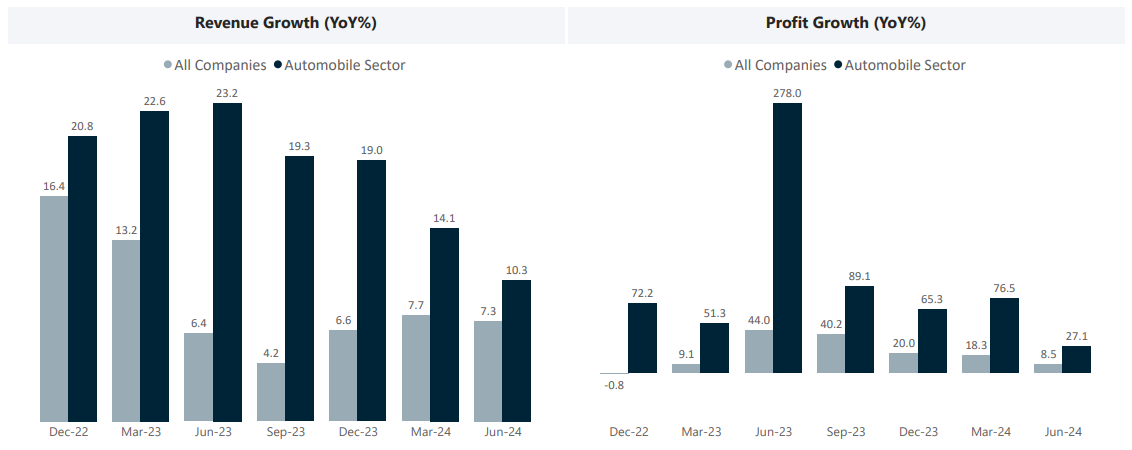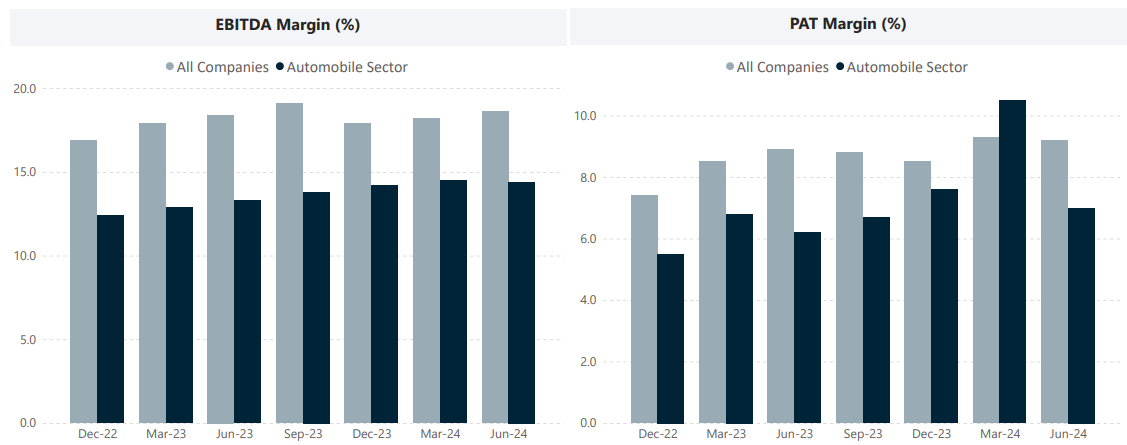Our goal with The Daily Brief is to simplify the biggest stories in the Indian markets and help you understand what they mean. We won’t just tell you what happened, but why and how too. We do this show in both formats: video and audio. This piece curates the stories that we talk about.
You can listen to the podcast on Spotify, Apple Podcasts, or wherever you get your podcasts and videos on YouTube. You can also watch The Daily Brief in Hindi.
Today on The Daily Brief:
- One of the largest NBFC IPOs
- Titan’s Revenue is up but profits are down, why?
- India’s auto sector: A September crash, followed by an October comeback
One of the largest NBFC IPOs
HDB Financial Services (HDB), a key player in India’s lending sector, is preparing for a major IPO. The company plans to raise ₹12,500 crore in its public offering, making it one of the largest IPOs ever by a non-banking financial company (NBFC) in India.
For some background, HDB is the lending arm of HDFC Bank and manages over ₹90,000 crore in assets. This IPO has the potential to reshape the lending market by introducing a strong competitor equipped with fresh capital to expand its reach.
HDB operates as an NBFC, which means it can lend money like a bank but doesn’t offer services like savings accounts. Its customers range from individuals to businesses, covering both urban and rural areas across India.
HDB’s lending portfolio is a mix of “secured” and “unsecured” loans. Approximately 71% of its loans are secured by assets such as property or vehicles, offering a safety net if borrowers default. The remaining 29% are unsecured loans, which come without collateral but typically earn higher interest rates. This mix provides HDB with a balance of stable, low-risk income and potential for higher returns.
Source: Company’s DRHP
In addition, HDB operates a smaller but valuable business process outsourcing (BPO) segment, mainly serving HDFC Bank. This includes tasks like collections and other back-office operations. While this segment contributes around 7.71% of HDB’s income, it offers a useful additional revenue stream that diversifies its earnings.
Source: Company’s DRHP
HDB’s recent financials show steady growth:
- Net Interest Margin (NIM): This measures how profitable HDB’s lending activities are. For FY24, its NIM stood at 7.85%, slightly down from 8.25% the year before. This small dip suggests that HDB is dealing with rising costs or increased competition.
Source: Company’s DRHP
- Profit After Tax (PAT) : HDB’s profits are on the rise. In FY24, it reported a PAT of ₹2,460.8 crore, marking a 25.6% increase from the previous year. This strong growth indicates that HDB’s business is expanding steadily and its profits are growing consistently.
- Non-Performing Assets (NPAs): NPAs refer to loans where borrowers have trouble making payments. HDB’s gross NPA is 1.90%, and its net NPA is 0.63%, both of which are considered low by industry standards. This shows HDB’s cautious and careful lending approach.
HDB plans to use the money raised from the IPO in two main ways:
- Building Financial Reserves (Tier-I Capital): HDB will use ₹2,500 crore from the IPO to boost its Tier-I capital. This is like a financial cushion that helps protect HDB during economic downturns or loan defaults. It will also help the company lend more confidently and meet regulatory requirements.
- Offer for Sale by HDFC Bank: The remaining ₹10,000 crore will go towards HDFC Bank selling part of its stake in HDB to the public. This move will give HDFC Bank extra liquidity and allow HDB to operate more independently in the public market.
HDB faces tough competition from major players in the market:
- Bajaj Finance: With assets under management (AUM) of ₹2,44,830 crore, Bajaj Finance is a giant in the sector, offering a wide range of successful products.
- Cholamandalam Investment: Specializing in vehicle financing, Cholamandalam has an AUM of ₹1,53,720 crore and holds a strong position in this niche.
- Shriram Finance: Focused on commercial vehicle financing, Shriram Finance manages an AUM of ₹1,92,600 crore and has a loyal customer base.
Compared to its competitors, HDB’s assets under management (AUM) of ₹90,230 crore may be smaller, but it has been steadily growing at a compound annual growth rate (CAGR) of 21.18% over the past two years. With its emphasis on secured loans and low non-performing asset (NPA) levels, HDB has built a solid foundation in a highly competitive market.
Here are some unique strengths and potential challenges for HDB:
Strengths:
- Rural and Semi-Urban Presence: Around 71% of HDB’s branches are located in Tier 3, Tier 4, and rural areas, where there are fewer banking options. This allows HDB to serve underbanked customers and expand in less crowded markets.
Source: Company’s DRHP
- Disciplined Risk Management: HDB’s focus on secured loans helps keep its NPA levels low, minimizing risk. This careful approach gives it a solid advantage in maintaining stable, high-quality assets.
Challenges:
- Margin Pressure: HDB’s Net Interest Margin (NIM) of 7.85% is slightly lower than the previous year’s. If borrowing costs increase or if HDB needs to offer more competitive rates to attract borrowers, it could face further pressure on its margins.
- Dependence on HDFC Bank for BPO Revenue: While HDB’s BPO services contribute a smaller portion of its income, they are mainly tied to HDFC Bank. If HDFC Bank changes its outsourcing strategy, it could impact HDB’s BPO earnings. To reduce this risk, HDB may need to diversify its BPO client base.
This IPO comes at a favorable time. With a growing middle class and rising credit demand, especially in smaller cities and rural areas, HDB is well-positioned to tap into a large market. Its strong lending foundation, low NPA levels, and wide rural reach provide a solid base for growth.
However, the challenge will be to maintain steady growth while managing risks. Going public means increased scrutiny from shareholders and new pressures to sustain growth without compromising quality. For HDB, this IPO is about more than raising funds—it’s about paving the way for a new chapter. The big question is whether HDB can continue expanding while staying true to its disciplined approach in a competitive landscape.
Titan’s revenue is up but profits are down, why?
In our next story, we’ll look at Titan’s recent performance, offering insights into India’s jewelry market and changing consumer trends. Titan, India’s largest jewelry company, gets around 90% of its revenue from jewelry sales. This makes its performance a good measure of how Indian consumers are spending on jewelry, which is a major part of the market.
Source: Tijori Finance
Source: Titan
In the second quarter of FY25, Titan’s consolidated revenue grew by 26% compared to the same period last year, reaching ₹13,660 crore. This growth was mainly driven by jewelry sales. Why the boost? Earlier this year, the government cut the customs duty on gold, making gold jewelry cheaper. This encouraged more gold purchases, especially during festivals and the wedding season when buying gold is a tradition in India.
Source: Titan
Despite the increase in revenue, Titan’s profit after tax (PAT) dropped by 23% from the previous year. This dip in profit was due to a few key factors, including higher advertising costs, increased interest expenses from acquiring CaratLane, and important changes in the jewelry market, which we’ll explore further.
Jewelry remains Titan’s core business, with sales increasing by a strong 25% this quarter. However, the segment’s profit margins fell by 540 basis points, which affected overall profitability. Here’s why:
Source: Titan
- Impact of the Customs Duty Cut: The government reduced the customs duty on gold from 15% to 6%. While this drove up sales, it also presented a challenge for Titan. The company had already bought gold at the higher duty rate, meaning they had to lower the value of their existing stock to match the new, lower price. This resulted in a one-time expense of ₹290 crore, and they expect another ₹280 crore hit in the next quarter.
- Shift in Consumer Preferences: With the customs duty cut, there was a rise in demand for pure gold items, like bullion and coins, which typically have lower profit margins compared to studded jewelry (pieces set with diamonds or other gems). While pure gold sales increased in volume, these lower-margin products reduced overall profitability.
-
Source: Titan
-
Softer Demand for Solitaire: The demand for large diamonds, known as solitaires, also weakened this quarter. Part of this is due to a global drop in demand, but there’s another player in the market: lab-grown diamonds (LGDs). These lab-created diamonds look almost the same as natural diamonds but cost significantly less, which appeals to price-conscious buyers. Titan’s sister company, Trent, has even started selling LGDs through their jewelry brand “Pome,” reflecting this trend’s rise. While Titan hasn’t entered the LGD market yet, they’re keeping a close eye on it and may consider stepping in if consumer interest keeps growing.
Source: thegemac
Titan’s recent acquisition of CaratLane, a digital-first jewelry brand, has been a major highlight. This quarter, CaratLane’s income grew by 28%, with the studded jewelry category (pieces set with diamonds) seeing an impressive 41% growth. This segment now makes up 79% of CaratLane’s sales. CaratLane also expanded its physical presence, opening 11 new stores, bringing its total to 286 stores across 119 cities. This growth highlights CaratLane’s rising popularity and strengthens Titan’s position in the digital jewelry market.
Source: Titan
While jewelry remains Titan’s main focus, its watch and eyewear segments also showed steady performance. The watch business grew by 19% year-over-year, driven by strong demand for analog watches, especially from premium brands like Titan and Helios. However, the wearables segment (smartwatches) experienced a slight decline, likely due to intense competition and pricing pressures.
Titan’s eyewear business grew modestly by 7%, but they are making changes to attract a wider range of customers. Titan Eye Plus stores now offer a broader selection of products, from affordable frames to high-end sunglasses, to appeal to different customer groups.
Titan’s results show that the jewelry market is in a state of change. The customs duty cut on gold, changing demand trends, and the rise of lab-grown diamonds signal a need for adaptation. Each of these factors could shape Titan’s future strategy. While the customs duty cut initially created costs, it may reduce gold smuggling by making legal purchases more appealing. This could help Titan capture a larger share of the market as more buyers turn to formal channels.
Lab-grown diamonds are also gaining momentum. Though Titan hasn’t entered this market yet, they’re keeping an eye on it. If demand for lab-grown diamonds continues to rise, Titan may include these in their offerings.
Overall, Titan’s quarterly results reflect more than just one company’s performance. They shed light on broader shifts in India’s consumer market and jewelry industry. With Titan at a turning point, it will be interesting to see how they adapt to these changes, balancing short-term challenges with long-term growth opportunities.
India’s auto sector: A September crash, followed by an October comeback
In September, India’s auto sector faced a tough time, with sales dropping significantly across the board. For those connected to the industry – from manufacturers and dealers to investors – it was a worrying month. Let’s take a closer look at what caused this dip and what it could mean for the future.
Several factors contributed to the decline in vehicle sales in September:
- Economic Slowdown: The overall economy wasn’t doing well. When people feel uncertain about their finances, they tend to hold off on big purchases, like cars.
- Floods in North India: Heavy rains led to widespread flooding in parts of North India, disrupting daily life. Understandably, people focused on urgent needs rather than making big purchases like vehicles.
- Shraadh: In India, shraadh is considered an inauspicious time to make new purchases, and it spanned most of September. This tradition often causes a drop in sales for large items, including vehicles.
As a result of these factors, auto sales dropped by nearly 10% compared to September of the previous year. Cars took the biggest hit, with sales falling around 20%. This sudden and unexpected dip came as a shock for an industry that had been steadily growing over the past few years.
To understand why this slowdown is surprising, let’s look back a bit. In recent years, India’s auto sector has been seeing strong growth. As the impact of the COVID-19 pandemic lessened, demand for vehicles surged. Here’s why:
- Increased Demand Post-COVID: People wanted their own vehicles to travel safely and avoid crowded public transportation. This led to a spike in demand, especially for personal vehicles.
- Supply Chain Disruptions: At the same time, global supply chain issues meant that manufacturers struggled to keep up with demand. This led to two outcomes: long waiting lists for new vehicles and rising prices.
Over the past five years, the price of an average passenger car in India rose by 50% — from around ₹7.65 lakh to ₹11.5 lakh.
To meet the high demand, auto companies worked to resolve their supply issues and ramped up production. But just as they caught up, demand unexpectedly dropped off. Dealerships that once struggled to keep up were suddenly left with large inventories of unsold cars. Some reported having enough stock to last nearly three months without new sales.
To clear this excess inventory, manufacturers began offering big discounts — sometimes as high as ₹3 lakh on certain models. This marked a low point for the sector, with September shaping up to be the weakest growth quarter over the past two years.
Just as the industry was bracing for more tough months, October brought an unexpected boost. This month marks the festive season in India, with Navratri and Diwali encouraging people to make big purchases, including cars and two-wheelers. The surge in demand helped turn things around for the auto sector almost overnight.
Source: IndiaDataHub
Two-wheeler sales, in particular, saw a huge jump in October. Compared to the same month last year, most major manufacturers reported growth rates of over 25%. TVS Motors recorded nearly a 40% increase in sales. Ola, a newer player in the electric scooter market, saw its sales rise by about 75% compared to last October, giving it nearly 2% of India’s two-wheeler market.
Source: IndiaDataHub
Passenger car sales also made a strong recovery. Most major carmakers saw year-on-year growth of over 30% in October, making up for the September slump. Mahindra and Toyota, which managed to post modest growth even in September, saw their sales spike by around 50% in October.
Source: IndiaDataHub
However, not every vehicle category enjoyed the October boost. Tractor sales didn’t see the same level of growth and stood apart from the overall positive trend in the auto sector.
Looking at the bigger picture, the auto sector has been growing faster than many other parts of the market over the past few years. Auto companies have been increasing their revenue and profit at a faster pace than many other sectors.
Source: IndiaDataHub
But there’s a catch: the industry’s profit margins have lagged behind. Why? Higher operating costs. Automotive companies typically spend more on producing their vehicles compared to other industries, which affects their profitability. So, even as revenues grow, they aren’t as profitable as others.
Source: IndiaDataHub
This year, their profit margins may have been squeezed further by the heavy discounts they offered in recent months. While some input costs have gone down, these discounts likely put pressure on profits.
With the festive season behind us, sales in November might see a slight dip compared to last year. That’s because Diwali fell in November last year, driving a lot of that month’s demand. This year, most Diwali purchases were made in October, so it’s natural for November to be quieter.
The real question is what happens after November. October’s sales spike could just be a one-off due to the festive season. If demand doesn’t pick up again, the auto industry might face more challenges, including low sales and squeezed profits. But if demand stays strong, we could see a return to more normal sales patterns, with fewer discounts and possibly better profit margins as things stabilize.
In short, October’s bounce-back was a positive sign, but it’s still too early to tell if it’s the start of a lasting recovery. For now, the auto industry has shown it can bounce back, but the road ahead may still have some bumps.
Tidbits
- Akasa Air reported a loss of ₹1,670 crore for FY24, up from ₹744 crore the previous year. On the bright side, its income grew to ₹3,144 crore, driven by an expanded fleet of 24 planes, over 110 daily flights, and the launch of international operations in March 2024.
- Starting in January 2025, India plans to introduce stricter import restrictions for laptops, PCs, and other IT hardware. The new rules may require prior approvals for imports, and minimum quality standards for these devices may need to be set. This move follows earlier restrictions in 2023, which had little impact on reducing imports, as nearly 60% of India’s IT hardware is still imported, mainly from China.
- The Reserve Bank of India (RBI) is exploring ways to expand the use of rupee vostro accounts, potentially allowing for cross-border lending and loans to Non-Resident Indians (NRIs). A new framework for this could be introduced within the next six months.
- Reliance Jio’s upcoming IPO is expected to raise over ₹52,000 crore, with the listing anticipated in Q2 or Q3 of 2025. This valuation is being compared to Airtel’s, positioning Jio as a major telecom player in India’s public markets.
Thank you for reading. Do share this with your friends and make them as smart as you are ![]() Join the discussion on today’s edition here.
Join the discussion on today’s edition here.
We’re now on Telegram, follow us for interesting updates on what’s happening in the world of business and finance. Join the conversation on today’s market action here.
If you have any feedback, do let us know in the comments

